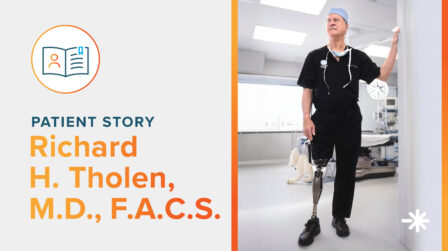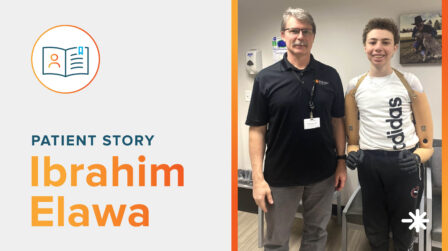Understanding Spina Bifida
Spina bifida occurs when the spine and spinal cord don’t form properly and is usually present at birth. More specifically, it is a condition that affects the neural tube.
The neural tube is the structure in a developing embryo that eventually becomes the baby’s brain, spinal cord, and the tissues that enclose them. Normally, the neural tube forms early in pregnancy and it closes by the 28th day after conception. In babies with spina bifida, a portion of the neural tube doesn’t close or develop properly, causing damage to the spinal cord and nerves.
Spina bifida can range from mild to severe, depending on the type, size, location, and complications. When necessary, early treatment for spina bifida involves surgery — although such treatment doesn’t always completely resolve the problem.
When to See a Doctor
Typically, severe spinal bifida (known as myelomeningocele) is diagnosed before or right after birth, when medical care is available. These children should be followed by a specialized team of doctors throughout their lives, and families should be educated on different complications that are possible.
Children with mild spina bifida (known as spina bifida occulta) typically don’t have any symptoms or complications, so only routine pediatric care is usually needed.
Complications
Spina bifida may cause minimal symptoms or minor physical disabilities. But severe spina bifida can lead to more significant physical disabilities. These can include the following walking and mobility problems and orthopedic complications:

Impact on Walking and Mobility
The nerves that control the leg muscles don’t work properly below the affected area. This can cause muscle weakness of the legs and sometimes paralysis. Whether a child can walk typically depends on where the spina bifida is, its size, and the care received before and after birth.
Potential Orthopedic Complications
Some children with spina bifida have a variety of complications in the legs and spine because of weak muscles in the legs and back. The types of complications depend on the location of the damaged spinal cord. Examples include:
- Curved spine (scoliosis)
- Abnormal growth
- Dislocation of the hip
- Bone and joint deformities
- Muscle contractures
Treatment
If your child has been diagnosed with spina bifida, your doctor may refer them to an orthotist – a specialist who provides devices that support the parts of the body when muscles are weak or bone and joints are aligned incorrectly. The orthotist will work with the doctor and the therapist to provide the best possible brace for your child.
Depending on the level of weakness, your child may be fit with a leg brace or a brace to support the spine. While ankle-foot orthoses (AFOs) are the most common braces to treat spina bifida, a brace (orthosis) may be used for any joint in the body depending on the child’s needs.
Established Indications, Benefits and Shortcomings of Lower Limb Orthoses in the Management of Children with Cerebral Palsy: 2018 Clinical Practice Guidelines https://www.mayoclinic.org/diseases-conditions/spina-bifida/symptoms-causes/syc-20377860#:~:text=Spina%20bifida%20is%20a%20birth,the%20tissues%20that%20enclose%20themttps://www.cdc.gov/ncbddd/cp/facts.html
Latest Updates
Subscribe to stay up-to-date on our latest posts.


